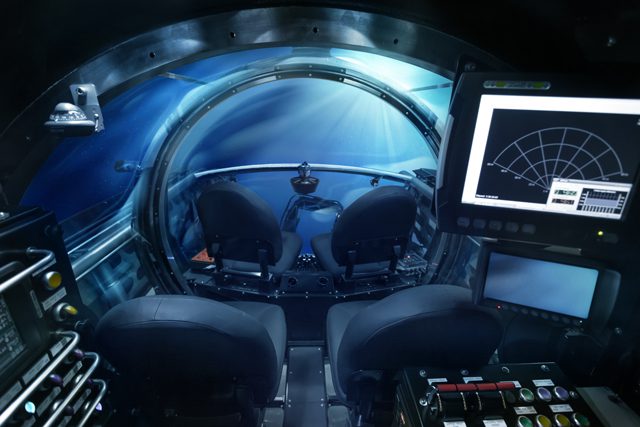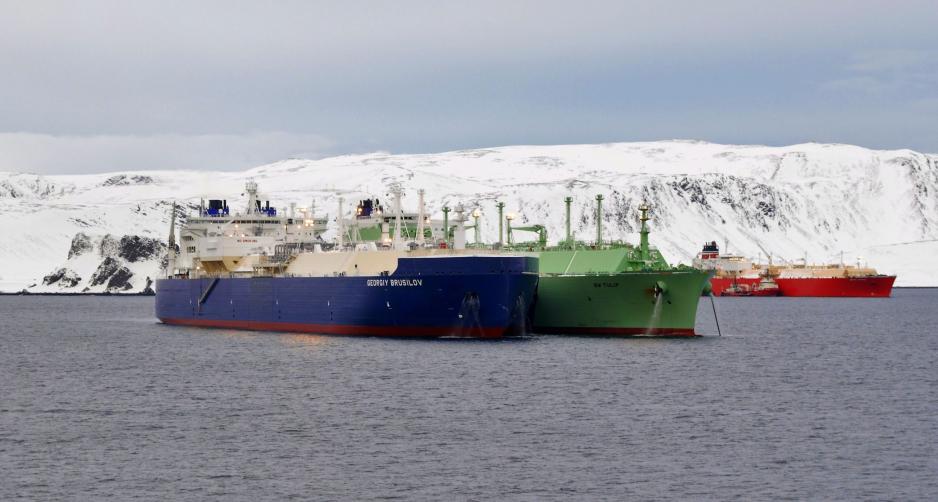Image: U Boat Worx
Oct. 7 (Bloomberg) — The strange contraption slowly being assembled in a modest industrial shed in Breda, a small city in the Netherlands, bears little resemblance to Nautilus, the fictional submarine of Jules Verne’s “Twenty Thousand Leagues Under the Sea.” It consists of a giant acrylic bubble bolted to a black, tubular steel frame and bracketed by yellow pontoons. But this craft, built by a Dutch company called U-Boat Worx, will carry three people as deep as 3,000 feet beneath the waves, allowing any billionaire to get his Captain Nemo on.
Megayacht owners are accustomed to their toys: Windsurfing boards, Jet Skis and helicopters are common. Submarines are just the latest addition to this aquatic arsenal, Bloomberg Pursuits magazine will report in its Autumn 2013 issue.
“Yachting is not just about sitting in a marina and sipping martinis anymore,” says Marc Deppe, vice president for sales and marketing at Vero Beach, Florida–based Triton Submarines, one of a half-dozen companies globally producing so- called personal submersibles. “Owners want the yacht to be an experiential platform where they go to unique places and see unique things and provide their families and guests with an adventure.”
Among those known to harbor subs aboard their boats are Microsoft Corp. billionaire Paul Allen, who owns the 414-foot (126-meter) Octopus, and Russian oligarch Roman Abramovich, whose 537-foot Eclipse held the title of world’s largest superyacht before being bested by the 590-foot Azzam, launched earlier this year by German luxury-boat builder Lurssen Werft GmbH, which declined to identify its owner.
Undersea Champagne
Unlike scuba diving, subs don’t require passengers to complete certification courses, squeeze into neoprene, worry about the bends or even actually get wet. Once ensconced, occupants are sped along by electric propellers at 2 to 3 nautical miles (3.7 to 5.6 kilometers) per hour and can remain submerged for six to 16 hours, traveling farther, faster and for longer periods of time than even the most-accomplished conventional diver.
Although film director James Cameron famously reached the deepest point on the planet, the Mariana Trench, in an uncomfortably cramped, custom-built, single-occupancy vehicle, most submersibles aimed at the yachting set are appropriately plush: Passengers can kibitz while sunk into leather seats, play tunes through an iPod docking station and even sip Champagne pulled from an onboard chiller. Hydrophones allow passengers to listen in on dolphins, whales and other sea creatures. And many subs are outfitted with robotic arms or video-equipped remotely operated vehicles that can fly out to examine objects on the seabed.
Surveying Giant Squid
“People see it as an expedition tool in terms of finding new things,” says Bert Houtman, the former Dutch software entrepreneur who founded U-Boat Worx in 2005 largely to fulfill a boyhood dream of building his very own sub.
Although the most-brilliant tropical fish and corals are found in relatively shallow waters, personal submersibles can explore parts of the ocean that would otherwise remain beyond reach. In 2012, researchers used one of Triton’s 1,000-meter- rated subs, lent by hedge-fund billionaire Ray Dalio, to find and film a living giant squid for the first time. That same year, Allen lent his sub to an aborted attempt to salvage the bell from the Royal Navy cruiser HMS Hood, which was sunk during World War II. Richmond, California–based Hawkes Ocean Technologies even designed a sub capable of descending to 37,000 feet, which billionaire entrepreneur Richard Branson is using in his attempt to reach the deepest points beneath all of the world’s oceans.
$1 Million And Up
Because the industry is largely unregulated, safety is an obvious concern, Houtman says. To reassure potential customers, the leading sub companies — including Hawkes, Triton and U- Boat, along with Nautilus Submarines, SEAmagine Hydrospace and Sub Aviator Systems — voluntarily submit their submersibles to rating by the American Bureau of Shipping, Lloyd’s Register of Shipping, Germanischer Lloyd AG or Italy’s RINA. Most companies also require that would-be pilots complete a three-week training course and that at least one member of the yacht’s crew other than the pilot knows how to launch, recover and monitor a sub’s progress from the surface.
At a cost of about $1 million for a two-person capsule with the shallowest depth rating and upwards of $4 million for the largest, deepest-diving models, personal submersibles still constitute a relatively small market, with no more than 50 currently in operation worldwide, Houtman says.
Cranes Not Cost
However, in the short term, the biggest limit to growth in the market isn’t cost, he says, but cranes. Rather than surfacing directly into the belly of its megayacht mother ship, a la James Bond, minisubs spend their off-duty hours on deck, and most large yachts don’t have the cranes capable of lifting and launching the vehicles, which can weigh from 6,000 to 18,000 pounds (2,700 to 8,200 kilograms).
To surmount this obstacle, Triton is now designing specialized tenders — companion vessels costing from $2 million to $2.5 million and made specifically to store, launch and recover subs. Meanwhile, multiple yacht makers are pursuing the dream of launching directly from the bowels of a boat.
“I have had a number of clients ask me about incorporating a personal submersible,” says Luca Boldrini, head of sales and marketing at Italian yacht builder CRN. Cost and safety concerns tend to put them off, he says.
Houtman, however, compares the submersible market with yacht-based helicopters.
“Thirty years ago, people thought it was crazy to talk about putting helicopters on private yachts,” he says. “Now, it is not unusual for megayachts to have a helipad.”
Abramovich’s Eclipse has two. This particular race to the bottom, it would seem, is just getting started.
– Jeremy Kahn, Copyright 2013 Bloomberg.

 Join The Club
Join The Club











